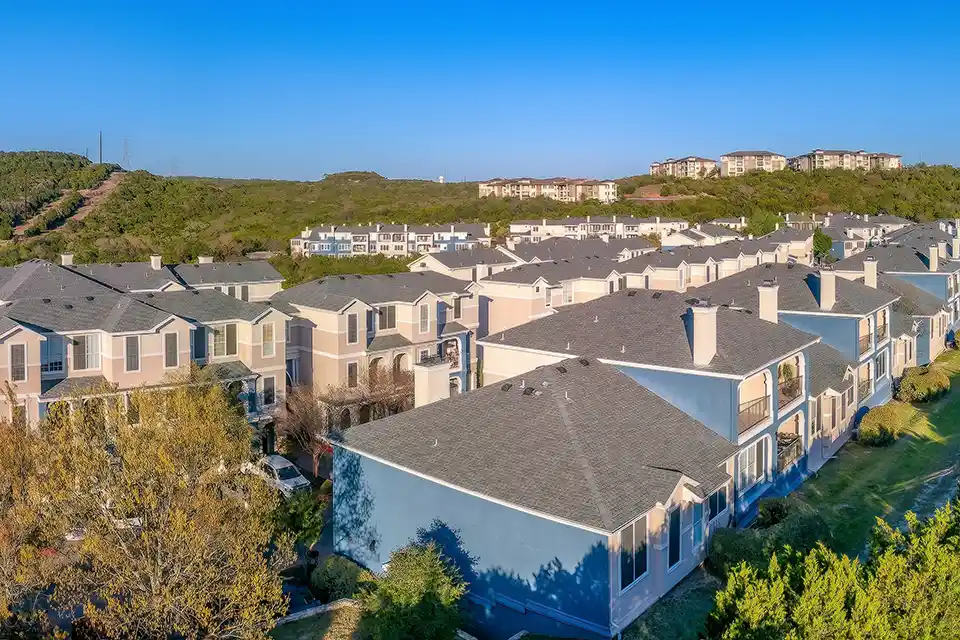Navigating Obstacles with Professional Austin HOA Management Practices
Navigating Obstacles with Professional Austin HOA Management Practices
Blog Article
How HOA Monitoring Facilitates Interaction and Conflict Resolution Amongst Homeowners
Homeowners' Organizations (HOAs) offer as essential entities in promoting communication and dealing with conflicts amongst citizens. While these systems are developed to minimize misconceptions, the underlying characteristics of resident communications can often make complex matters.
Role of HOAs in Interaction
Homeowners' Organizations (HOAs) play an important duty in promoting interaction within household areas, working as the main channel between homeowners and the regulating body. By developing a structured structure for dialogue, HOAs ensure that homeowners' ideas and concerns are listened to and dealt with properly - austin hoa management. This function is critical in cultivating a sense of area and belonging among citizens, as it encourages engagement and collaboration


Eventually, the effectiveness of an HOA in communication straight affects the overall fulfillment of homeowners. When communication is prioritized and taken care of successfully, it fosters a harmonious living setting where homeowners feel valued and linked, leading the way for an extra natural and lively area.

Developed Channels for Discussion
Establishing efficient networks for dialogue is necessary for any Home owners' Association (HOA) seeking to boost communication within its neighborhood. These networks work as foundational devices that facilitate the exchange of details and cultivate a sense of belonging among homeowners.
One of the most usual approaches is using e-newsletters, which give updates on community events, upkeep schedules, and essential news. Digital systems, such as community web sites and social media sites groups, can also play an essential duty in ensuring residents stay educated and involved. Consistently scheduled meetings, whether digital or in-person, enable participants to voice concerns, share ideas, and go over neighborhood problems in an organized environment.
Furthermore, tip boxes positioned strategically throughout the neighborhood can motivate locals to offer feedback anonymously, fostering an atmosphere of openness. Establishing clear lines of communication, such as dedicated email addresses or hotlines for specific concerns, also empowers homeowners to connect conveniently.
Problem Resolution Approaches
Efficient interaction networks are vital not just for sharing info yet likewise for addressing problems that may emerge within a neighborhood. These guidelines must be readily obtainable to all locals, ensuring transparency and uniformity.

Additionally, problems may gain from a structured process for escalating concerns. When necessary, hoas can assign a problem resolution committee or entail a neutral third event to help with conversations. This method offers a systematic method to handle conflicts while maintaining impartiality.
Eventually, effective problem resolution techniques not just deal with concerns but also construct count on amongst residents, strengthening a sense of community and shared responsibility. By prioritizing these strategies, HOAs can add to a more calm and cooperative neighborhood atmosphere.
Arbitration and Facilitation Methods
When navigating disputes within a area, facilitation and mediation strategies can play a crucial role in advertising right here understanding and resolution,. These methods involve competent experts who direct discussions, guaranteeing that all celebrations have the chance to reveal their point of views in a constructive environment. Mediation concentrates on helping contradictory celebrations find common ground with arrangement, while assistance includes managing team characteristics to promote reliable interaction.
An efficient conciliator creates a secure area for discussion, urging participants to actively listen and empathize with one another. This process often consists of reframing problems to clear up misunderstandings and stressing common interests as opposed to differences. Facilitators, on the other hand, may utilize techniques like conceptualizing sessions or group tasks to construct relationship and enhance cooperation among residents.
Both techniques prioritize nonpartisanship and impartiality, enabling residents to really feel heard and valued. By utilizing arbitration and facilitation strategies, HOA administration can encourage neighborhood participants to fix conflicts agreeably, decreasing stress and fostering a feeling of belonging. Inevitably, these approaches add to a much healthier neighborhood ambience, where conflicts are addressed proactively and relationships are reinforced through open interaction.
Advantages of Effective Communication
Clear communication serves as the foundation for successful interactions within a neighborhood, considerably click resources boosting the total performance of HOA management (austin hoa management). Effective communication promotes openness, which develops trust fund amongst homeowners and the monitoring team. When residents feel informed about community policies, events, and decisions, they are more most likely to involve favorably and add to the neighborhood's health
Additionally, clear interaction decreases misconceptions and minimizes the capacity for home dispute. By verbalizing expectations, regulations, and obligations plainly, HOAs can preemptively deal with issues prior to they intensify. Residents equipped with significant info are better placed to follow community standards and solve conflicts agreeably.
Additionally, effective interaction channels encourage comments and recommendations from residents, equipping them to participate proactively in the decision-making process. This inclusivity not just enhances area morale however also brings about more depictive and informed results.
Furthermore, constant updates through newsletters, conferences, and digital systems ensure that all neighborhood participants are aligned with the HOA's vision. In recap, reliable communication is crucial for fostering a natural area, advertising energetic involvement, and inevitably achieving a harmonious living setting.
Conclusion
In final thought, efficient HOA administration significantly enhances interaction and dispute resolution amongst homeowners. Inevitably, the promo of reliable communication leads to lowered misconceptions and increased resident complete satisfaction, contributing to a harmonious and natural neighborhood setting.
Property Owners' Organizations (HOAs) play a crucial role in facilitating interaction within household communities, acting as the primary avenue in between citizens and the regulating body.HOAs generally organize normal conferences, newsletters, and electronic systems to promote openness and maintain residents educated regarding community developments and laws. These efforts not only boost communication but additionally equip residents to involve in the decision-making process, thereby raising their investment in the community's health - austin hoa management. When locals really feel notified about neighborhood events, policies, and choices, they are much more most likely to engage positively and contribute to the area's well-being
Ultimately, the promo of efficient interaction leads to minimized misconceptions and increased resident satisfaction, adding to a harmonious and natural community setting.
Report this page